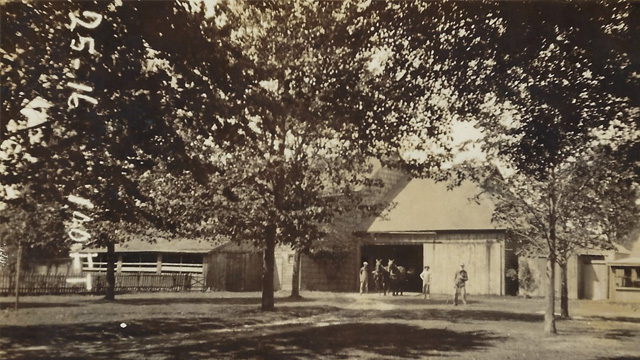

VIEW STOP 22 SCRIPT
Hi, this is Halsey again. I am really proud of my barn. It is one of the largest on Sound Avenue, nearly 10,000 square feet of floor space. The bigger the barn, the more hay we could store, the more animals we could feed and the more money we could make. You could tell how prosperous a farm was by the size of its barn.
Parts of the barn date well before the Revolution, but it was much smaller and looked nothing like this then. It wasn’t even in the same place. Just after the Civil War my father and I decided we didn’t like where it was. Too close to the house and to the road, so we moved it back hee-aa. Then, every few years we added a new section or rebuilt an old part. But we Hallocks never threw any building material away. We just reused it somewhere else. For example, if you look un-dah the front shed, which I built about 1900, many of the ceiling beams are hand-hewn timbers salvaged from a much older building.
We positioned the barn so that this broad side faces south to take advantage of natural solar heating. This is where we kept cattle and sheep. The barn protected them from the cold north wind in the winter and allowed the low-angle sun to warm them.
Just like in the house, we used the barn roof to collect rainwater. There are two cisterns un-dah the barn to hold that water. You can see one of them off to the left end of this shed. There is another un-dah the horse stables. We used this pump to water the horses.
Now walk out around the sheep pen to the far end of the barn to find the kids bringing in a load of hay.
